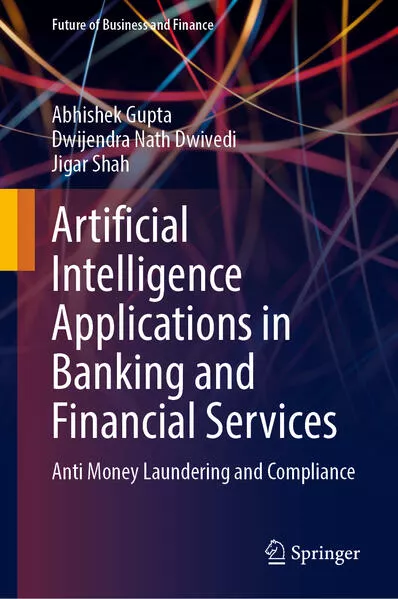Chronologie aller Bände (1 - 2)
Die Reihenfolge beginnt mit dem Buch "Blockchain Gaps". Wer alle Bücher der Reihe nach lesen möchte, sollte mit diesem Band von Shin'ichiro Matsuo beginnen. Der zweite Teil der Reihe "Artificial Intelligence Applications in Banking and Financial Services" ist am 19.07.2023 erschienen. Mit insgesamt 2 Bänden wurde die Reihe über einen Zeitraum von ungefähr 2 Jahren fortgesetzt. Der neueste Band trägt den Titel "Artificial Intelligence Applications in Banking and Financial Services".
- Anzahl der Bewertungen für die gesamte Reihe: 6
- Ø Bewertung der Reihe: 2.7
- Start der Reihe: 28.04.2022
- Neueste Folge: 07.08.2024
Diese Reihenfolge enthält 2 unterschiedliche Autoren.
- Autor: Matsuo, Shin'ichiro
- Anzahl Bewertungen: 0
- Ø Bewertung:
- Medium: Buch
- Veröffentlicht: 28.04.2022
- Genre: Sonstiges
Blockchain Gaps
This book analyzes the fundamental issues faced when blockchain technology is applied to real-life applications. These concerns, not only in the realm of computer science, are caused by the nature of technological design. Blockchain is considered the foundation of a wide range of flexible ecosystems; its technology is an excellent mixture of mathematics, cryptography, incentive mechanisms, economics, and pertinent regulations. The book provides an essential understanding of why such fundamental issues arise, by revising the underlying theories. Blockchain theory is thus presented in an easy-to-understand, useful manner. Also explained is the reason why blockchain is hard to adopt for real-life problems but is valuable as a foundation for flexible ecosystems. Included are directions for solving those problems and finding suitable areas for blockchain applications in the future.
The authors of this work are experts from a wide range of backgrounds such as cryptography, distributed computing, computer science, trust, identity, regulation, and standardization. Their contributions collected here will appeal to all who are interested in blockchain and the elements surrounding it.
- Autor: Gupta, Abhishek
- Anzahl Bewertungen: 3
- Ø Bewertung: 2.7
- Medium: Buch
- Veröffentlicht: 19.07.2023
- Genre: Krimi
Artificial Intelligence Applications in Banking and Financial Services
This book discusses all aspects of money laundering, starting from traditional approach to financial crimes to artificial intelligence-enabled solutions. It also discusses the regulators approach to curb financial crimes and how syndication among financial institutions can create a robust ecosystem for monitoring and managing financial crimes. It opens with an introduction to financial crimes for a financial institution, the context of financial crimes, and its various participants. Various types of money laundering, terrorist financing, and dealing with watch list entities are also part of the discussion. Through its twelve chapters, the book provides an overview of ways in which financial institutions deal with financial crimes; various IT solutions for monitoring and managing financial crimes; data organization and governance in the financial crimes context; machine learning and artificial intelligence (AI) in financial crimes; customer-level transaction monitoring system; machine learning-driven alert optimization; AML investigation; bias and ethical pitfalls in machine learning; and enterprise-level AI-driven Financial Crime Investigation (FCI) unit. There is also an Appendix which contains a detailed review of various data sciences approaches that are popular among practitioners.
The book discusses each topic through real-life experiences. It also leverages the experience of Chief Compliance Officers of some large organizations to showcase real challenges that heads of large organizations face while dealing with this sensitive topic. It thus delivers a hands-on guide for setting up, managing, and transforming into a best-in-class financial crimes management unit. It is thus an invaluable resource for researchers, students, corporates, and industry watchers alike.

